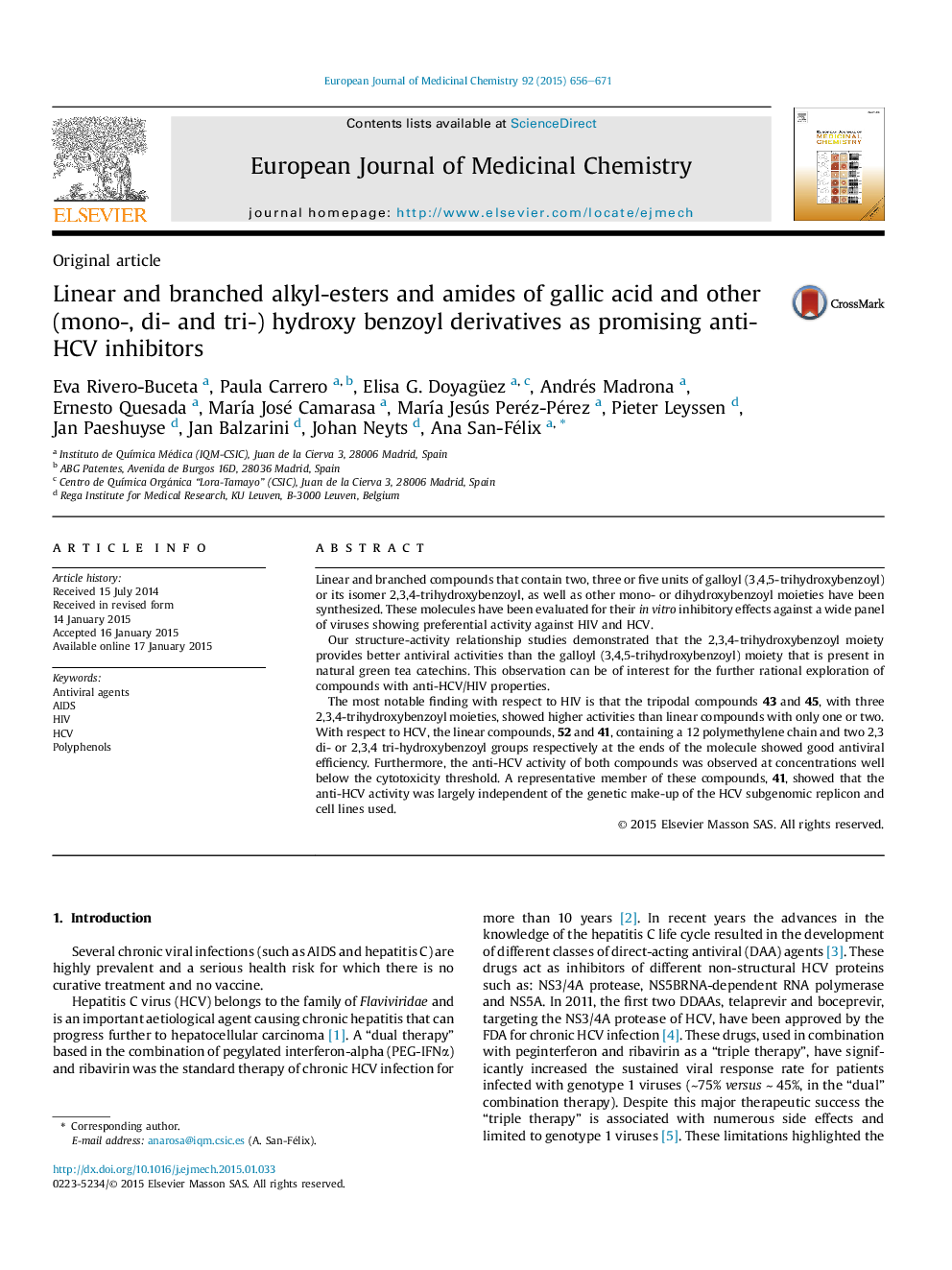| کد مقاله | کد نشریه | سال انتشار | مقاله انگلیسی | نسخه تمام متن |
|---|---|---|---|---|
| 1394022 | 1501124 | 2015 | 16 صفحه PDF | دانلود رایگان |

• A collection of linear and branched polyphenols were synthesized and evaluated as antivirals.
• Branched derivatives 43 and 45 proved to be the most actives against HIV.
• Linear derivatives 41 and 52 proved to be the most actives against HCV.
• 2,3,4-Trihydroxyphenyl moiety provides better antiviral activity than the galloyl moiety.
• At least two contiguous hydroxyl groups on the aromatic ring seem to be important for activity.
Linear and branched compounds that contain two, three or five units of galloyl (3,4,5-trihydroxybenzoyl) or its isomer 2,3,4-trihydroxybenzoyl, as well as other mono- or dihydroxybenzoyl moieties have been synthesized. These molecules have been evaluated for their in vitro inhibitory effects against a wide panel of viruses showing preferential activity against HIV and HCV.Our structure-activity relationship studies demonstrated that the 2,3,4-trihydroxybenzoyl moiety provides better antiviral activities than the galloyl (3,4,5-trihydroxybenzoyl) moiety that is present in natural green tea catechins. This observation can be of interest for the further rational exploration of compounds with anti-HCV/HIV properties.The most notable finding with respect to HIV is that the tripodal compounds 43 and 45, with three 2,3,4-trihydroxybenzoyl moieties, showed higher activities than linear compounds with only one or two. With respect to HCV, the linear compounds, 52 and 41, containing a 12 polymethylene chain and two 2,3 di- or 2,3,4 tri-hydroxybenzoyl groups respectively at the ends of the molecule showed good antiviral efficiency. Furthermore, the anti-HCV activity of both compounds was observed at concentrations well below the cytotoxicity threshold. A representative member of these compounds, 41, showed that the anti-HCV activity was largely independent of the genetic make-up of the HCV subgenomic replicon and cell lines used.
Figure optionsDownload as PowerPoint slide
Journal: European Journal of Medicinal Chemistry - Volume 92, 6 March 2015, Pages 656–671